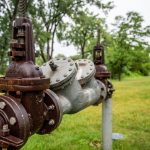Backflow Prevention: Safeguarding Your Water Supply from Contamination
Clean and safe drinking water is a fundamental necessity for every individual. We rely on our water supply for various activities, including drinking, cooking, and bathing. However, the safety of our water is crucial, as any contamination can lead to serious health issues. One essential aspect of maintaining a secure water supply is backflow prevention. In this blog post, we will dive into the importance of backflow prevention and how it safeguards our water supply from contamination.
Understanding Backflow
To grasp the significance of backflow prevention, we need to understand what backflow is. Backflow occurs when the direction of water flow in a plumbing system gets reversed. Instead of flowing in the expected direction, clean water can be contaminated with potentially harmful substances, such as chemicals, pollutants, or even sewage. This reversal can happen due to a sudden drop in water pressure or a cross-connection between the potable water supply and a contaminated source.
Common Causes of Backflow
Several common causes can lead to backflow in a water supply system. One major cause is a sudden and significant water pressure drop, which can occur during firefighting activities or when a large number of water outlets are used simultaneously. Another cause is a cross-connection, where a connection exists between the potable water supply and a contaminated source. These connections can be found in irrigation systems, swimming pools, or even garden hoses that are left submerged in stagnant water.
Dangers of Backflow
Backflow poses serious risks to public health and safety. When contaminated water infiltrates the potable water supply, it can introduce harmful bacteria, chemicals, and other pathogens. Consuming or even coming into contact with this contaminated water can lead to various diseases, including gastrointestinal illnesses, skin infections, or even poisoning. It is particularly dangerous for vulnerable populations, such as children, pregnant women, or individuals with compromised immune systems.
Importance of Backflow Prevention
Backflow prevention is crucial in safeguarding the water supply from contamination. By installing and maintaining backflow prevention devices, such as backflow preventers and check valves, we can ensure that the direction of water flow remains unidirectional, from the water supply to the user. These devices create a physical barrier that prevents contaminated water from flowing back into the potable water supply.
Role of Backflow Preventers
Backflow preventers play a vital role in safeguarding the water supply from contamination. These devices are installed at critical locations in the plumbing system, where a risk of backflow is highest. They consist of various valves that automatically close when a reverse flow is detected, preventing any backward movement of the water. The type of backflow preventer required depends on the level of risk and the specific needs of each location. Regular testing and maintenance of backflow preventers are essential to ensure their effectiveness.
Legal Requirements and Regulations
To enforce the importance of backflow prevention, many jurisdictions have implemented legal requirements and regulations. These regulations aim to ensure that backflow preventers are installed, tested, and maintained at all appropriate locations. Failure to comply with these regulations can result in penalties, fines, or even the loss of water service. It is essential for both homeowners and businesses to be aware of the local regulations and take measures to comply with them.
Let Carpet Capital Fire Prevention Help With Your Backflow Issues!
Backflow prevention is a critical aspect of maintaining a safe and clean water supply. By understanding the dangers of backflow and the importance of prevention, we can enhance the safety of our water system and protect public health. Regular maintenance and testing of backflow preventers, as well as adherence to legal requirements, are essential for ensuring the effectiveness of backflow prevention measures. So let us prioritize backflow prevention to safeguard our water supply from contamination and ensure the well-being of our communities.
